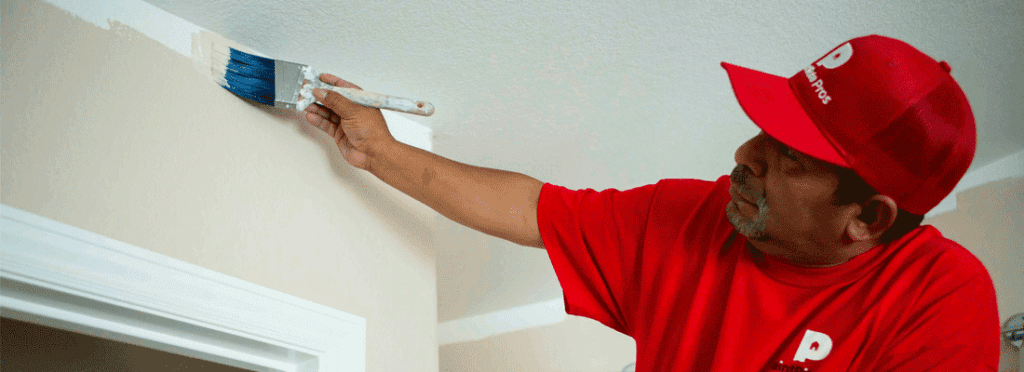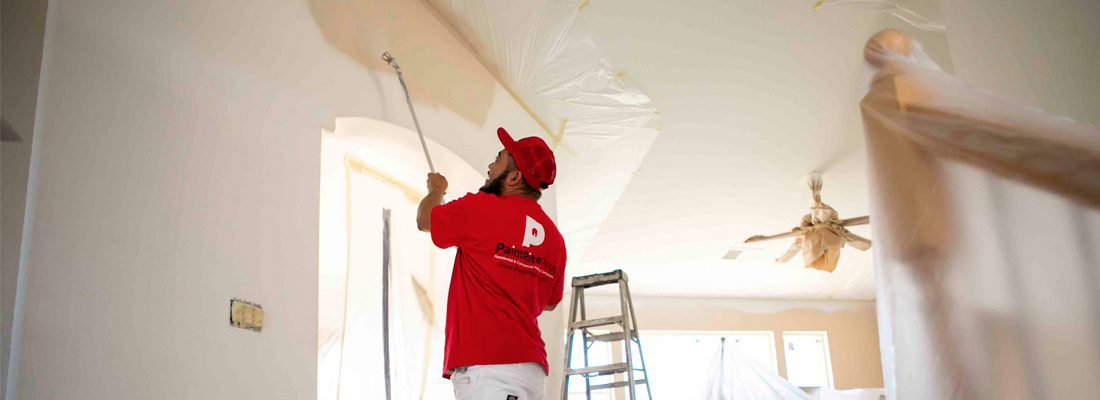When you’re learning how to paint a deck, there are several important things to know and do. We go over those here. Though most homeowners prefer to stain deck boards, painting is a great way to add a splash of color to your outdoor space. Painting your deck opens up a world of opportunity for you. No more are you bound to a solid stain hue. With deck paint, the sky is the limit when it comes to patterns and colors. This allows you the luxury of truly making the space your own.
If after reading this, you decide you’d like to hire a painting company to help you, we’ll give you a free quote. We have offices in Sacramento and Las Vegas.
How Much Does It Cost to Paint a Deck?
One of the first steps in painting your deck is figuring out how much you can expect to pay. Experts agree that the average cost to paint a deck is between $2 to $5 per square foot. This means that if your deck has a surface area of 300 square feet, it will cost approximately $1,050 to complete. However, this cost is variable and will rise or fall based on several factors including:
- Labor costs to hire a professional
- Condition of the deck boards
- Quality of the paint selected
However, if your deck has already been painted, the cost may be higher. This is because of the additional cleaning and prep required to get the surface ready for a new coat of paint. A pressure washer may be required to help get the deck boards thoroughly rinsed of any debris.
Deck Paint Pricing
Deck paint varies in price with $40 per gallon being the least you can expect to pay. Some higher quality paints may cost you $60 per gallon but others can be much less expensive. Each gallon of paint is rated to coat from 125 to 300 square feet. Paint coverage will be dependent upon the condition of the wood as well as the color you choose.
If you want to save a little money on your deck painting job, it’s a great idea to consider this a DIY project. However, hiring a professional is often well worth the extra dollars. Our professional deck painters are careful to prepare your deck and make sure the paint will properly adhere. This ensures an even and more durable finish, saving you both time and money.
Professional painters, including ours, are well versed in all aspects of deck painting. This expertise allows them to select the right paints to withstand all weather conditions including the hot, dry air in Las Vegas that you’re accustomed to. They also are up to date on the latest techniques and products to improve the longevity of deck painting jobs.
How to Paint a Deck with Peeling Paint
Peeling paint is a common problem many homeowners face. To add a new coat of paint to your deck, you must first get rid of the old flaking paint.
There are a few simple steps to helping you get your deck ready for painting. They include:
1. Scrape all peeling paint
You must first remove all flakes of paint from your deck before you can prepare the surface. A stiff brush or a scraping tool does the job well.
2. Sand the deck
Be sure to sand all areas of the deck where paint chips have been removed. You need the surface to be completely smooth.
3. Clean the deck boards
Once the surface has been sanded, you’ll need to clean it to remove any dirt. If any debris remains on the deck boards, the paint will not stick to that area. After the deck has been power washed, you must wait a minimum of 24 hours for the wood to thoroughly dry. You can then proceed to the next step: applying the paint.
4. Paint the deck
When the deck’s surface is clean and dry, you may then begin painting. Thankfully, there are several different methods you can choose from. A brush or roller does an excellent job. For speedier results, consider a paint sprayer.
5. Allow to dry
Allow the paint to dry overnight or up to 24 hours, depending on your climate. You can then apply a second coat if needed.
How to Remove Paint from a Deck
If you need to completely remove a coat of paint from your deck, you’ll want to use a stripper. Unfortunately, removing paint from a deck with a stripper involves some mess.
Strippers come in gel form and are applied to a deck to soften old paint. Once the paint is softened, it can then be rinsed away with a pressure washer or hose.
However, though strippers do an excellent job, they don’t always get rid of the old paint in one shot. Sometimes, it is necessary to scrub the surface with a stiff brush then reapply the stripper for a second attempt. The deck then needs to be cleaned and allowed to completely dry before applying any paint.
Can You Paint Composite Decking?
Composite decking is designed to be low maintenance. Its attractive appearance is reminiscent of wood. But if over time you’re thinking a change is in order, you’re likely wondering—can you paint composite decking?
Yes, you can paint your composite deck. This particular type of deck, also sometimes referred to as Trex decking, is intended to never need painting. However, the surface will accept paint readily. As with wooden decks, you’ll still need to clean, prep, and prime the surface first.
To paint your composite decking, follow these easy steps:
- Remove or cover any plants on or near the deck
- Clean the deck using household cleaners and a power washer
- Sand the deck to a smooth finish
- Prime the surface
- Paint the deck
Thinking of giving your deck a new coat of paint? Follow our top tips to get the job done right or contact us for a free estimate if you live in the Las Vegas or Sacramento areas.



